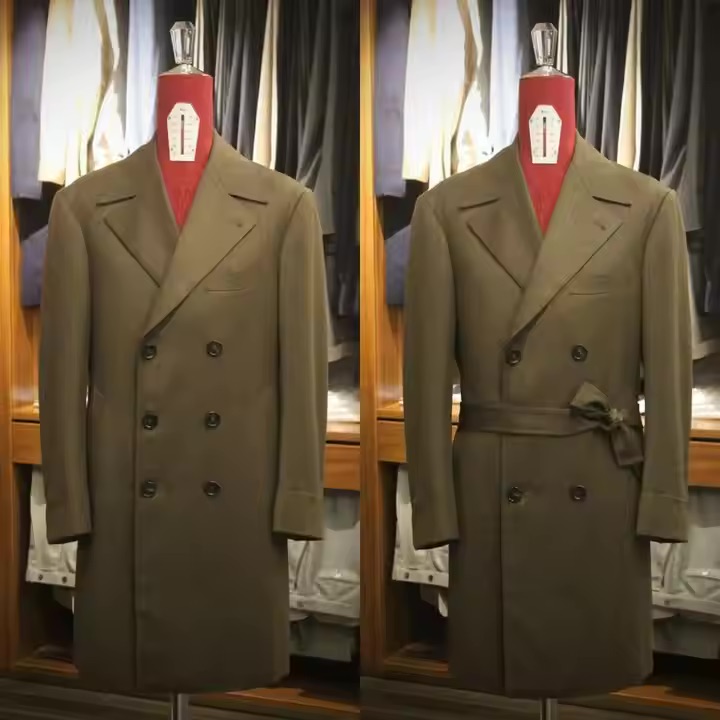Cellphone
+8615194787503

Virtual fitting utilizes 3D body scanning + AI intelligent matching technology to allow customers to “try on” clothing digitally without physically wearing it.
This technology is widely used in high-end bespoke suits, online shopping platforms, and intelligent tailoring systems, enabling customers to visualize how the garment fits and enhancing customization accuracy.
Core Technologies of Virtual Fitting
1. 3D Body Scanning
🔹 Uses LiDAR laser scanning or depth cameras (such as iPhone Face ID technology) to precisely measure over 30 body data points, including height, shoulder width, chest, waist, and hip circumference, within seconds.
🔹 Some systems incorporate AI posture recognition to analyze body shape, stance, arm, and leg proportions.
🔹 Generates a personalized digital body model for further clothing matching.
2. AI Size Matching
🔹 AI intelligent algorithms automatically analyze the user’s body data and match the most suitable suit pattern and size.
🔹 Integrates brand databases (considering size variations between different brands) for personalized recommendations, reducing fitting errors.
🔹 Predicts tightness, drape, and movement range, ensuring comfort and a perfect fit.
3. 3D Garment Simulation
🔹 Utilizes a physics simulation engine to replicate fabric texture, drape, and stretching effects on the suit.
🔹 Tests different fabrics (e.g., wool, linen, silk) to accurately display how the garment appears when worn.
🔹 Allows customers to rotate, zoom in, and zoom out the virtual model to view the outfit from a 360° perspective.
Advantages of Virtual Fitting
✅ Enhances customization accuracy – 3D scanning is more precise than traditional manual measurements, reducing sizing errors.
✅ Improves customer experience – Customers can try on different styles directly on their phone, computer, or in-store, without changing clothes.
✅ Saves time and costs – Reduces sample production costs and improves the efficiency of custom tailoring.
✅ Supports online shopping – Users can try on garments remotely, aiding purchase decisions and decreasing return rates.
Application Scenarios
🔹 High-end bespoke suits – Customers can select the best-fitting pattern and fabric through 3D modeling before customization.
🔹 Luxury brand online customization – Brands like Zegna and Hugo Boss have introduced 3D fitting experiences.
🔹 E-commerce platforms – Sites like Tmall and Amazon are testing AI virtual fitting to enhance online shopping experiences.
🔹 Smart fitting mirrors – Some retail stores are equipped with AR smart fitting mirrors, allowing customers to try on different styles simply by standing in front of the mirror.
Conclusion
Virtual fitting, combining 3D body scanning + AI intelligent matching, enables users to experience the fit and style of garments without physically wearing them. This technology is transforming bespoke suit customization, e-commerce shopping, and in-store experiences, making fashion smarter and more interactive.
Plsease input value
Plsease input value
